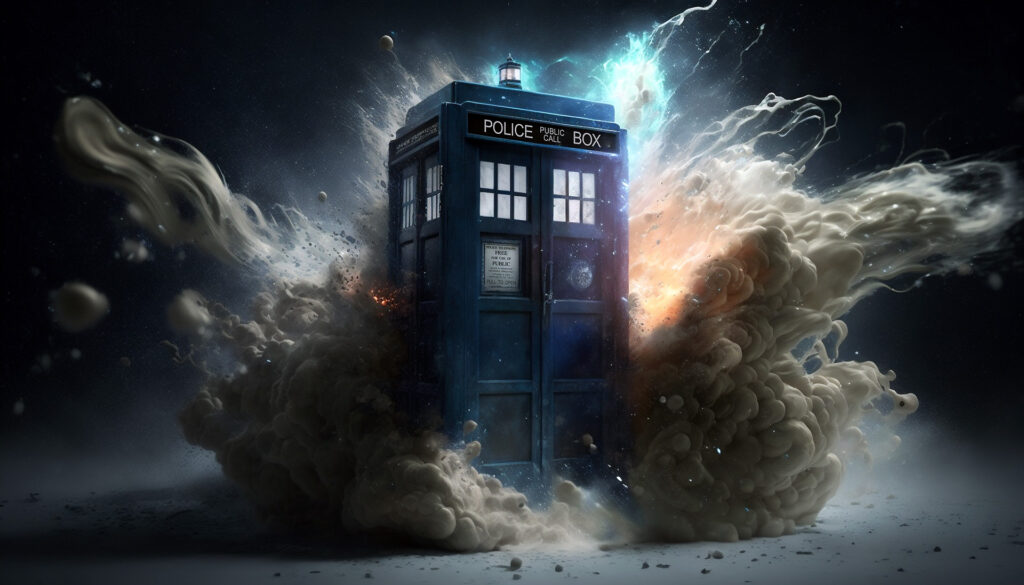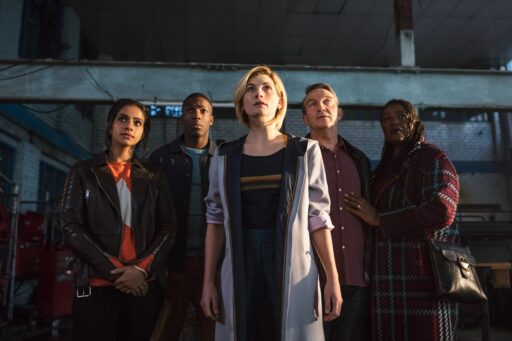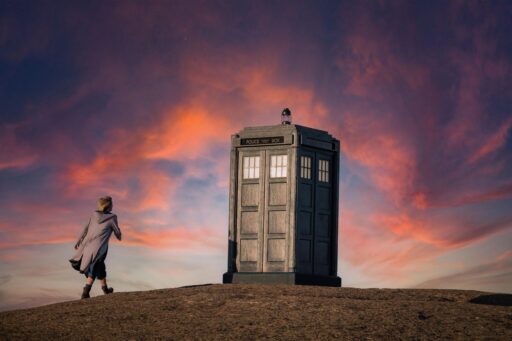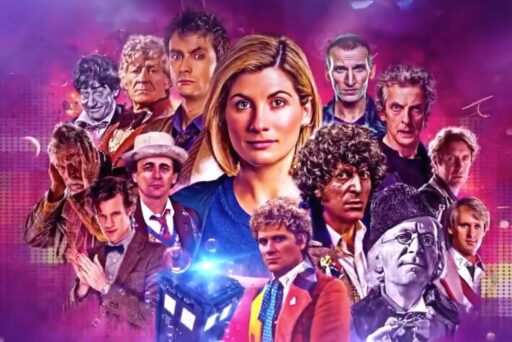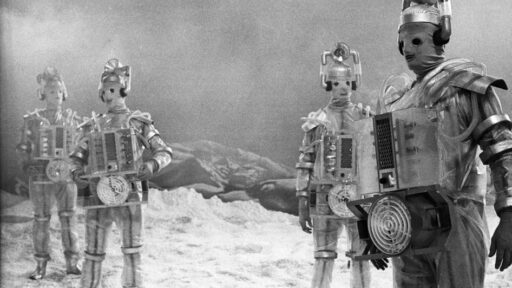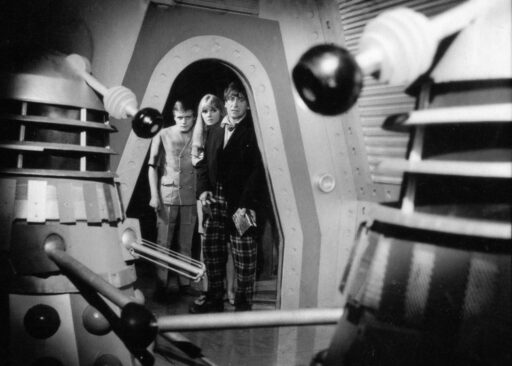Warning, this is going to be long and I don’t expect many people will have the patience and/or interest to read all of it. At first, I thought I would streamline it, but some things can’t be accurately conveyed in a soundbite, so I’m just leaning into it. The short version is:
Doctor Who does not have an official canon nor is it held to a tight continuity, instead it operates under what I like to refer to as weighted continuity.
Well that sounds simple enough but, what does it mean and why does it matter? To answer that we’re going to have to dig quite a bit deeper. Doctor Who is unusual and perhaps unique amongst genre TV shows in its approach to both continuity and canon. Modern sci-fi and fantasy shows have given fans the expectation that a series will tell a story from start to finish over the course of its run and that it will do so in a cohesive world. That hasn’t always been the case however, older shows were far more episodic than the (semi)serialized formats that we’ve become accustomed to over the last twenty five years.
Of course Doctor Who is not a modern shown. Even the relaunch is now eighteen years old putting it near the beginning of the evolution towards serialized story telling. The elements it did bring with it, such as story arcs and character arcs, have been grafted onto a show whose format dates back close to sixty years and an entirely different era of tv. So what we have is a show with 39 seasons spread over 59 years and on top of that we have novelizations, comic books and audio plays, all dreamt up by hundreds of different people.
How Did We Get Here?
It is well known that the BBC routinely junked many early episodes of Doctor Who and the historical significance of that loss is thoroughly documented, but the reasoning behind the junking had an impact on how the show was perceived and written. TV in general in the 1960s was ephemeral, disposable entertainment that would be seen once and never again. Even novelizations were rare, only three stories were novelized during the 60s and the popular Target range did not begin until 1972.
VHS tapes didn’t exist and while some eager fans did record the audio off the tv there was basically no expectation that the audience would have detailed memories of what came before and so the show made reference to things they thought people might remember like the Daleks, but it didn’t worry too much about consistency on all the details, no one would know anyway.
They also had no long term plans for the show, and actor contracts were often quite short so plans changed frequently. Originally the Doctor was probably a human from the future although they stayed vague on the specifics. Arguably he did not become definitively alien until The War Games, certainly that’s the first time he was a Time Lord. At least as late as Evil of the Daleks the implication is that the Doctor is a human of some sort. This isn’t a case of the canny producers hiding something from their audience for a surprise reveal, it just literally hadn’t been thought out. Core elements of the Doctor’s back story did not exist until the end of Season 6 of the show. Think about that for a moment.
A good example of how this lack of long term planning created continuity issues is the Doctor’s two hearts, which were first mentioned in Spearhead From Space. There are multiple times during earlier incarnations where the Doctor seems to only have one heart. In Edge of Destruction Ian says his heart is normal. In Wheel In Space he is inspected by a human doctor and no comment is made about the extra heart. And yes, because I know someone is itching to, there are ways you can explain away these and other inconsistencies, but you’re adding an explanation, there’s nothing in the show addressing it. Also, we’ll get to head canon later.
As I mentioned Doctor Who as a show did attempt some basic level of continuity in its early years (when the Doctor meets the Daleks or Cybermen again previous encounters are mentioned), however, it was not looking ahead to any particular destination and as a result there are multiple smaller continuity errors. No one spent much energy worrying about such errors because the focus was on telling an entertaining story right now, not setting things up for the future or worrying too much about what came before.
This wasn’t in any way unusual for British tv shows in the 60s and 70s. While they certainly aired serials with a beginning, middle and end it was also common to have episodic shows where each episode largely stood on its own and you had a new case the next week. Continuity in say, The Avengers is pretty minimal too. But most shows didn’t run for 10 years, never mind 26.
So there were no repeats, no video tapes, no show bible and even the Target novelizations when they arrived weren’t entirely faithful to the episodes that had aired. As the show ran for more and more years, the writers themselves ran into a problem which is that they didn’t have access to the original material. The big stuff was known but the little details got lost forgotten or muddled up as the number of stories, producers and writers piled up. And so inevitably the number of contradictions grew.
The fans knew of course because fans are obsessive like that, but the show wasn’t being run or written by fans. They did start to have more influence in the 80s but by that point the pattern for how the show worked was set. References were popular but writers didn’t have to make everything line up perfectly, just hit the major points, weighted continuity did the rest.
The Expanded Universe, 90s and Beyond
If continuity in Classic Who was messy then things only got worse when it went off the air. Suddenly the major source of new stories was the Virgin New Adventures, Virgin Missing Adventures and Doctor Who Magazine comics. These were predominantly written by fans of the show and took a greater interest in continuity than the show had frequently filling in gaps, linking things together or attempting to fix continuity issues. But, they weren’t all consistent with each other so the result was, even more of a mess than before. And that’s before you throw in the tv movie with its Eye of Harmony in the TARDIS and half-human Doctor…
Again, a reminder that the point here isn’t to fix all these continuity issues, it’s to demonstrate that Doctor Who has simply never had a consistent continuity and has functioned successfully despite that. It doesn’t matter if you’ve come up with a clever theory that will make this all make sense, that is at most an ad-hoc patch applied after the fact, and it’s one that isn’t even happening in the show.
Things did change a little when the show was revived. When the show went off air in the 80s, production of the show was extremely outdated. In 2005 Russell T Davies had the opportunity to jump things forward and modernize the whole thing. Production, scriptwriting everything was approached in line with other shows being aired in the 2000s, a radical change from what we had last seen.
Where Classic Who was structured in a serial format with each story spanning multiple episodes but being almost entirely self-contained and assuming minimal if any prior knowledge, Nu Who used the now much more common season arc structure with tighter continuity between episodes and a story threading through them leading to some sort of season finale.
Despite that increased focus on in season continuity there are only a handful of times in the first three seasons of the revived show where knowledge of anything that came before is significant to what you are watching. But this wasn’t a reboot, it was explicitly a continuation. RTD kept everything and used the concept of a Time War to hand wave away dealing with a lot of the baggage. Still, every single, conflicting thing that had ever aired in the tv show remained and the status of all that expanded universe material was deliberately left unclarified. The things that RTD was interested in were openly restated and everything else sat out there available for someone to use if they wanted to. It was probably the most extreme example we’ve ever had of weighted continuity in action.
This Can’t Possibly Work Can It?
Under normal circumstances anything with that much backstory would either find itself buried under the weight of its own history and unable to tell an interesting story without contradicting itself and what has already happened. The central character would be so weighed down with PTSD and the sheer magnitude of everything they’ve gone through to be able to function credibly. There are solutions to that problem of course, Star Wars jettisoned a whole chunk of its canon and DC Comics has wholesale rebooted its continuity multiple times now in an effort to streamline things (we’ll talk more about that later).
Doctor Who hasn’t done either of those things though and yet manages to stay relatively unencumbered by what has happened before. It achieves this partly due to the nature of the show being a time travel one, which gives a fallback excuse to explain almost any contradiction and also through the concept of regeneration which allows for essentially a complete character reset for the Doctor at regular intervals. In essence Doctor Who never actually rejects anything that has come before, it just doesn’t feel bound by it.
Only a handful of elements stay with the show throughout its entire run, even the Time Lord concept wasn’t there at the beginning. and a slightly larger number have accumulated and stuck as the series continued. The more something is referenced in the show (Time Lords have two hearts) the more likely that detail is to stick and become used in future stories.
In broad strokes then everything that has happened previously is true and yet none of it has to be true. The show exists in a perpetual Schrodinger state and it has worked for almost 60 years. To understand why it works though we’re going to have to take a closer look at… Canon vs. Continuity – Coming soon
Discover more from Veristopia
Subscribe to get the latest posts sent to your email.


